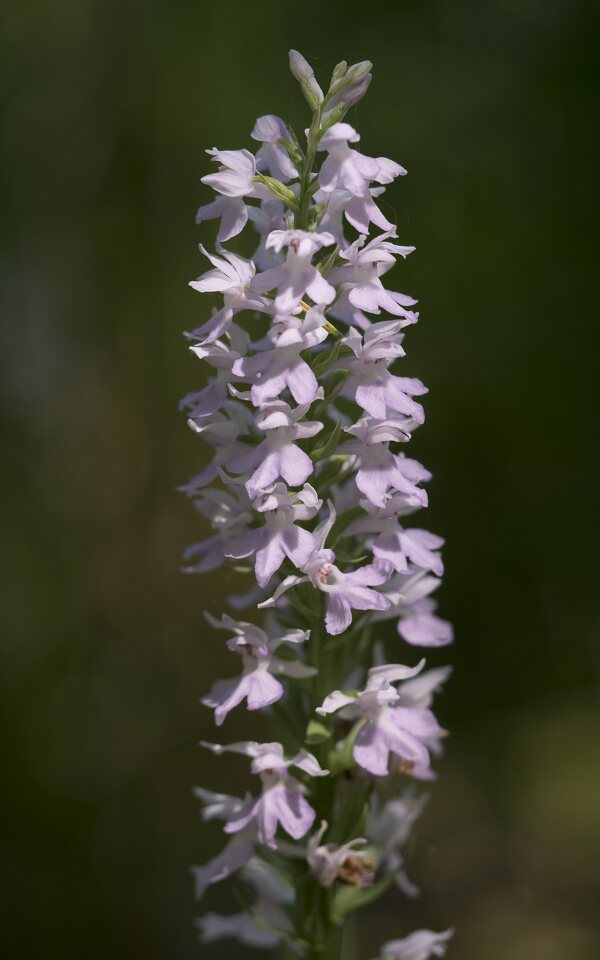
Dactylorhiza fuchsii · aukštoji gegūnė
- common spotted orchid
- Fuchs’ Knabenkraut, Fuchs’ Fingerknabenkraut
- aukštoji gegūnė
- fuksa dzegužpirkstīte
- kukułka Fuchsa, stoplamek Fuchsa
https://en.wikipedia.org/wiki/Dactylorhiza_fuchsii Dactylorhiza fuchsii is one of Europe's most common wild orchids. It is widespread across much of Europe, with the range extending eastward into Siberia, Mongolia and Xinjiang. Typical habitats are, variously across the range, conifer, beech and chestnut forests, moderately wet meadows, bogs and margins of streams. The preferred substrate is supposedly calcareous although it seems not to be particularly linked to this type of substrate.
Dactylorhiza fuchsii is a herbaceous perennial plant ranging from 10 to 60 cm in height. The inflorescence is a dense-flowered spike, produced in June–August, that is at first conical then cylindrical. The flower colour can vary from white to pale purple with purple spots, a symmetrical pattern of dark purple loops or dots and dashes. The lip has three lobes. The bracts are usually shorter than the flower. The lip is smaller than that of the very similar Dactylorhiza maculata and has three deeper cuts. The middle lobe is more than half as large as a lateral lobe. Some colonies are highly perfumed, attractive to day-flying moths. The leaves are narrow lanceolate, keeled and often dark-spotted.
Augalas 15-80 cm aukščio. Žemutiniai lapai elipsiški arba atvirkščiai pailgai kiaušiniški, viršūnė dažniausiai buka ar apskrita, dėmės ištįsusios skersai lapo, kartais jie nedėmėti. Lūpa giliai triskiautė, vidurinė skiautė nusmailėjusi, gerokai ilgesnė už šnines skiautes ir išsikišusi iš jų. Žydi birželio-liepos mėn. Auga šlapiuose, šaltiniuotose ir užpelkėjusiuose miškuose, krūmuose. Lietuvos raudonoji knyga.
‥
0 comments
Add a comment